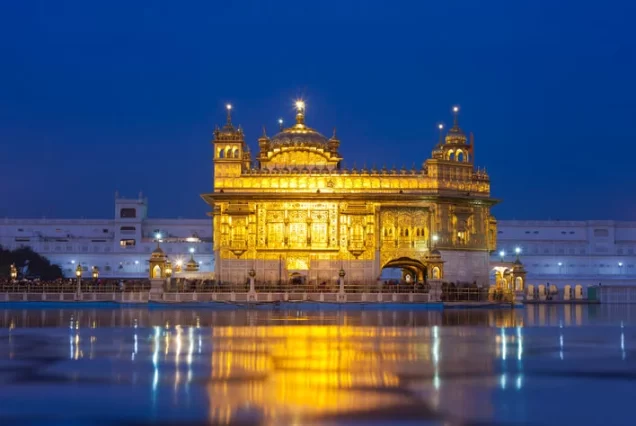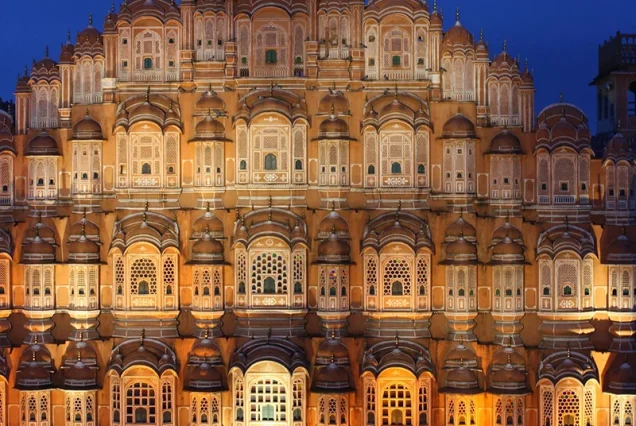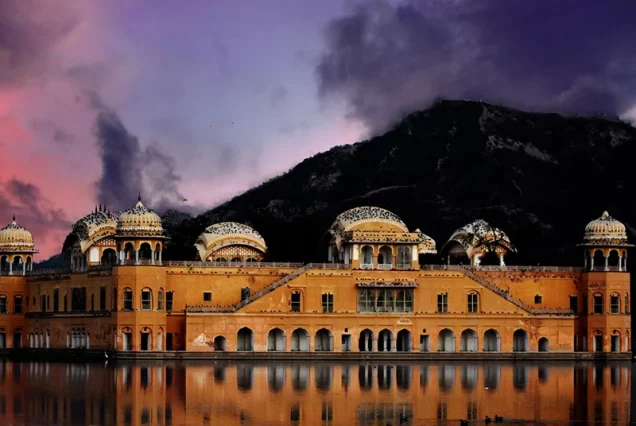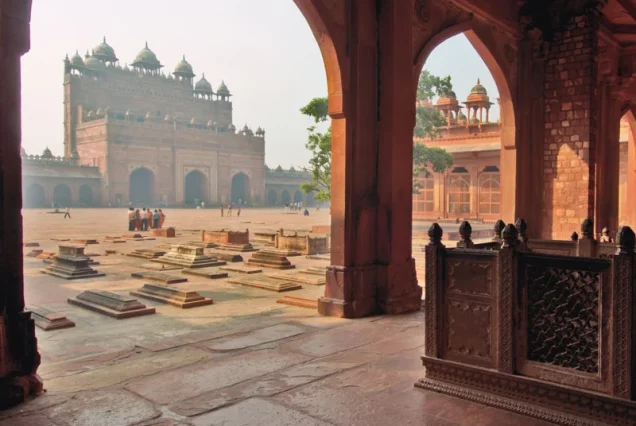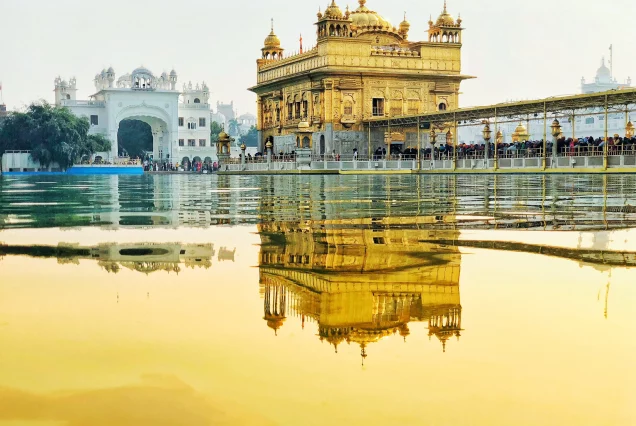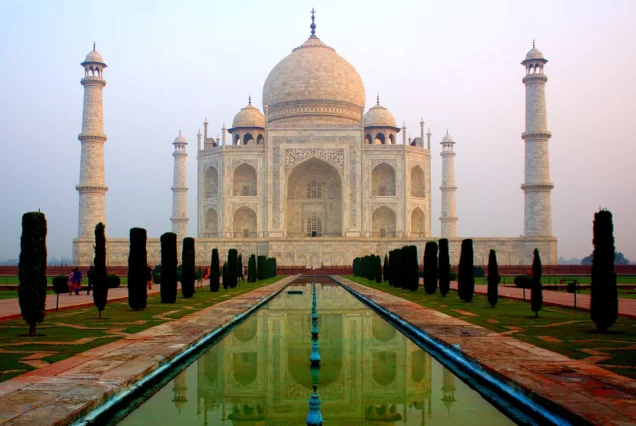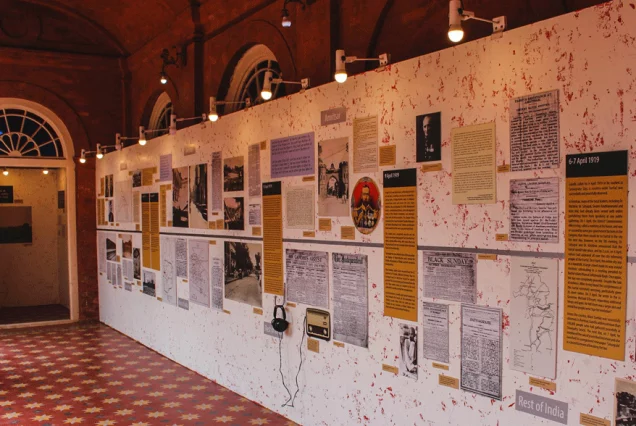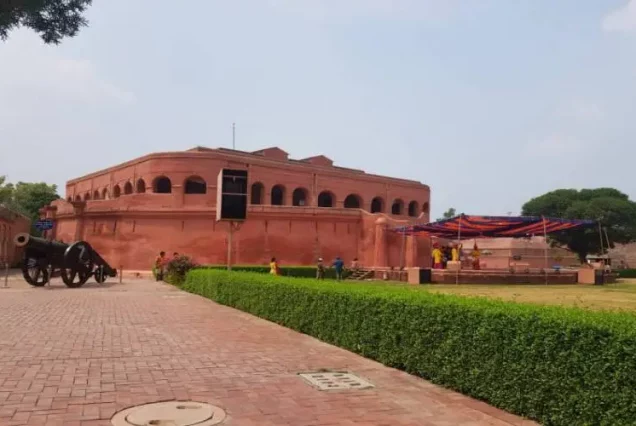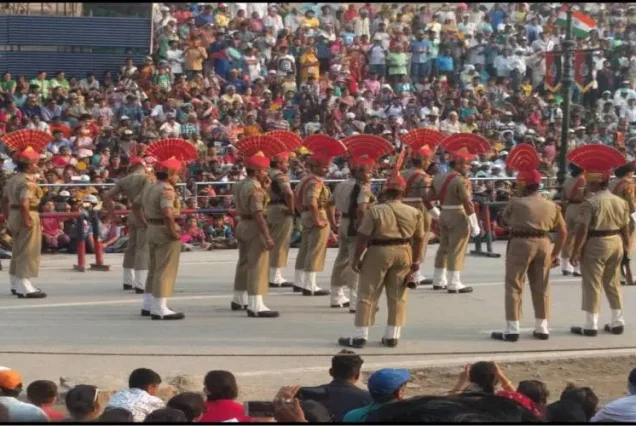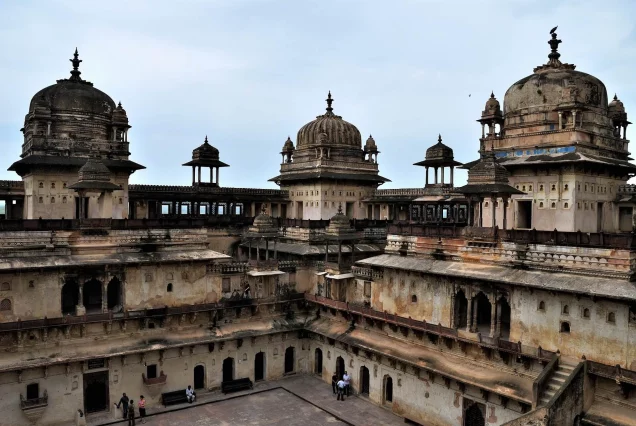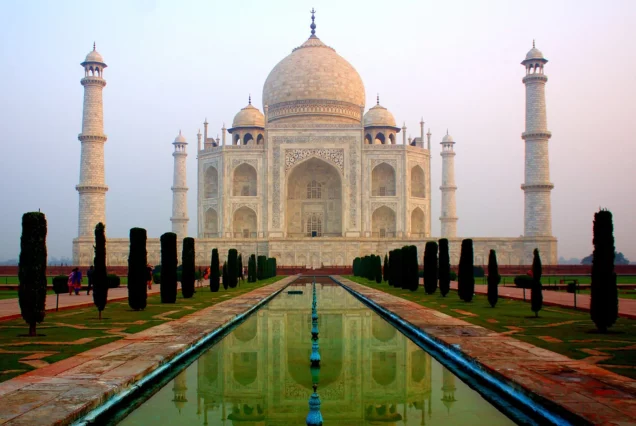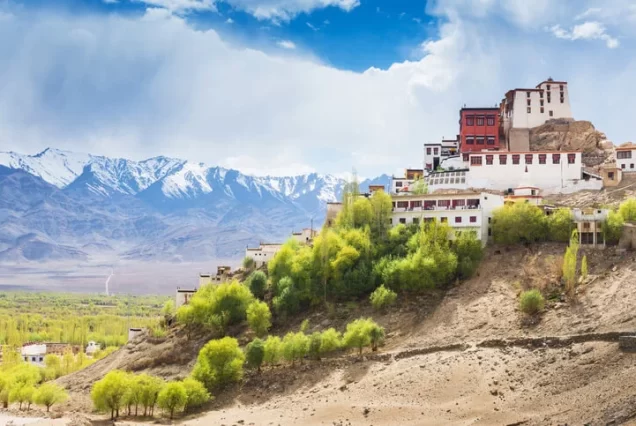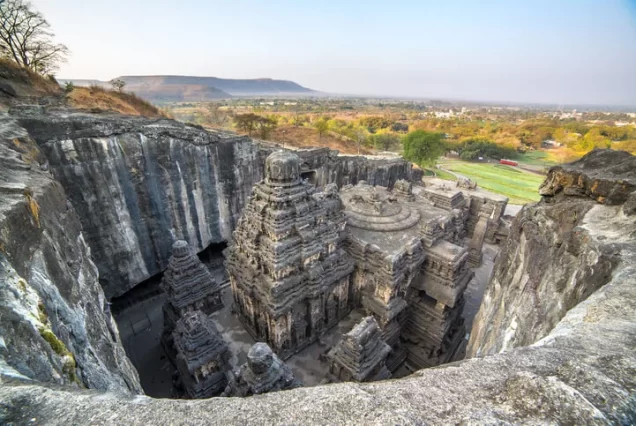Golden Triangle with Amritsar
India, a colorful land of diverse nature and landscape where one can explore different places, culture, traditions, people, cuisines, festivals and many more aspects of human life. India is a notebook of an infinite number of pages which no one can read in one go, you will need to go through it many times to get the experience and knowledge about this magical book. Here, one of the most famous and interesting topics is the Golden Triangle Tour Packages which is perfectly blended with the culture and traditions of this beautiful and joyful city of Amritsar. While going through this circuit of India, you will be amazed how you will be welcomed and treated by some of the humblest people in the world and their festive culture.
Golden Triangle Tour with Amritsar will take you back to the time of Mughals, Rajputana and the life of Sikhs during the rule of the British Empire in India. Here, this tour package will provide you the perfect glimpse of some of the finest architecture of the world, majestic monuments, super-luxurious palaces and hotels, rich heritage and culture along with some of the most fascinating and eye-watering stories about India’s past during the British and Mughal Era. This Tour of India will provide you with an excellent image about the culture and traditions when you visit the famous Golden Temple of India in Amritsar and will make you fall in love with their hospitality. Along with these majestic monuments and historical sites of India, Golden Triangle Tour with Amritsar also provide you some of the most famous and mouth-watering dishes of North India with the Kachoris and Jalebis of Jaipur, Street food of Delhi, Agra’s Petha made of sweet and the heavy lassi’s of Amritsar.
Golden Triangle Tour with Amritsar is the perfect cluster of cities where all the festivals are celebrated with great joy and love. These cities are the best in India where you can enjoy the festivals of Light (Diwali), Festival of color (Holi), Kite Festival, and the famous Besakhi (Crop Festival) of Amritsar. You will live the moment of your lifetime with these colorful festivals where everyone comes together to celebrate with homemade snacks and sweets.
Custom Tours India would love to arrange a fully customized tour plan of India with these beautiful cities of North India where you can explore most of this Country’s rich heritage and culture. Below mentioned is the tour plan which you may consider for your upcoming Golden Triangle tour with Amritsar and if you wish to add more cities, please feel free to drop us your requirements in the query box.
Golden Triangle Tour Package with Amritsar
| Day | Place | Summary |
|---|---|---|
| 1 | Delhi | Arrival |
| 2 | Delhi | Jama Masjid, Chandni Chowk, Humayun’s Tomb, Red Fort, Parliament House, India Gate, Lotus Temple |
| 3 | Delhi - Amritsar | Golden Temple |
| 4 | Amritsar | Jallianwala Bagh, Partition Museum, Wagah Border |
| 5 | Amritsar - Agra | Mehtab Bagh |
| 6 | Agra | Taj Mahal, Agra Fort, Itmad-Ud-Daulah |
| 7 | Agra - Jaipur | Fatehpur Sikri, Abhaneri Village |
| 8 | Jaipur | Hawa Mahal, Jal Mahal, Panna-Meena Kund, Amber Fort, City Palace, Jantar Mantar |
| 9 | Jaipur | Jaigarh Fort, Nahargarh Fort, Birla Temple |
| 10 | Jaipur - Delhi | Departure |
Day 1: Arrival at IGI Airport, New Delhi
We welcome you in this beautiful Country at IGI Airport, New Delhi, where you will be escorted by a representative of Custom Tours India who will introduce you to your air-conditioned vehicle and driver. Later, on your way to your hotel, you will share a small travel plan and stories about this Country.
On reaching your hotel, you can check-in and spend the rest of the evening at leisure and relax.
Day 2: Delhi Local sightseeing
Today, have your healthy breakfast at the hotel and then we will take you for a full-day sightseeing tour of the city covering all the major tourist places of Old and New Delhi. You will be accompanied by an English-speaking tour guide who will remain with you for the complete day explaining to you the significance and history of each monument you will be exploring. Along with this, if you need any help or have any query, please feel free to ask your tour guide. So, today you will be exploring the monuments and tourist sites.
- Jama Masjid: We will start this day by visiting the largest mosque of India which was built by Mughals in the year 1644 using the fine red sandstone and white marble. The mosque provides an extremely beautiful view of the surrounding as it is situated at an elevation of 10m and can accommodate 25,000 devotees at one time.
Here, you can go for the great Rickshaw Ride where you will be taken inside the narrow alleys of Chandni Chowk – one of the oldest markets in the history of Delhi. Here, you will love to see the daily life of buyers and sellers along with some of the best spices, textiles and home décor items of the Country.
- Red Fort: Next to Jama Masjid, we have the marvelous red sandstone structure which is known as Red Fort and was built by Mughal Emperor Shah Jahan when he moved his capital from Agra to Delhi. This great monument took 10 years and is inspired by Indo-Islamic architecture. The world-famous Kohinoor diamond was the part of Red Fort furniture and family.
Post these two tourist sites, we will take a short break for lunch at one of the famous restaurants of the city where you can have some local mouth-watering cuisines.
- Parliament House and India Gate: Post lunch, we will drive through Parliament House which is home of the President of our Country. This massive central government building was designed by Sir Edwin Lutyens in the year 1929 using red and cream sandstone.
Along with this, on the right-hand side of the road is the monument of sacrifice and velour – The India Gate, which was designed by Sir Edwin Lutyens and is dedicated to the soldiers who lost their lives during the World War I and the heroes who fought bravely during the Indo-Pakistan was of 1971.
- Humayun’s Tomb: Later, we will proceed for the first garden mausoleum in India which was built by Empress Haji Begam in the year 1570 in the loving memory of her husband and the Mughal Emperor Humayun. This beautiful structure is built using red sandstone and is surrounded by lush green lawns, pavilions, water channels, fountains and flower beds which makes this monument worth visiting.
- Lotus Temple: After exploring this garden tomb of Humayun, we will proceed to the last tourist place of the end, The Lotus Temple which is a Bahai House that was built in the year 1986 which welcomes people from all religions to come and worship their god. The main attraction of this temple is the structure which reflects the petals of lotus flowers. This lotus temple is one of the 7 such temples present in the world.
Later, in the evening we will return back to your hotel where you can spend some leisure time. Also, if you wish to dine outside, please feel free to ask your driver.
Day 3: Fly to Amritsar and local sightseeing
This day, have your leisurely breakfast at your hotel and then we will proceed towards IGI Airport to board the flight to our next destination Amritsar – The cultural and food capital of the Country. On reaching Amritsar, you will be escorted by your respective driver who will be with you during your time in Amritsar. Later, you will be transferred to your hotel to complete your check-in procedure. Rest for a while and you may choose to visit the famous Golden Temple in the evening.
- Golden Temple: We will start our Amritsar sightseeing tour with the holy blessing of the most important shrines in Sikhism by visiting the Golden Temple, also known as “Harmindar Sahib”. You will enjoy the walk towards the temple where you can see several local handicrafts shops, food stalls and people wearing colorful clothes and turbans. All of these colorful streets lead to the Golden Temple where you can sit and meditate or take a holy dip in the Kund. The main complex and temples were completed in 1589 and the holy book of Sikhism was installed in the year 1604. The main complex in built using white marble and has been beautifully laid with gold leafs on the top which makes this temple one of a kind.
Later, you may return back to your hotel and spend the rest of the evening at leisure.
Day 4: Local sightseeing in Amritsar
After having a super tasty and healthy breakfast at your hotel, we will proceed for a full-day sightseeing tour of the city which will be accompanied by an English-speaking tour guide. Please feel free to ask as many questions as you want.
We will start our day by visiting the Golden Temple once again so that your tour guide can tell you more about this holiest place of Sikhism and the deep history about their religion and this temple.
You will be amazed to see their holy kitchen where they serve free food to approx. 100,000 people daily. You will love to see how systemically people work here to provide hassle free meals to such a huge number of devotees. Golden temple is well-known and renowned as the largest kitchen in the world.
Later, after completing Golden Temple with your tour guide, you will be taken to visit the below historical monuments.
- Jallianwala Bagh: After coming out from the Golden Temple, a short walk through the market will lead to another historic site – Jallianwala Bagh. This is the place where thousands of peaceful protestors were killed on the order of General Dyer of the British Army who were gathered here to fight against the Rowlatt Act imposed by British Rule. This massacre happened on 13th April 1919 on the festive day of Baisakhi and you can still spot the bullet marks of British soldiers on the walls of Jallianwala Bagh.
- Partition Museum: Post Jallianwala Bagh, you will be taken to visit the newly built museum which tells us stories and emotions behind the painful partition of India into two nations – India and Pakistan. This museum holds great memories, images and trauma of millions of souls who were divided from each other due to this immediate partition of India into two parts.
Later, you will be taken for lunch at one of the famous restaurants of the city where you can have some of the tantalizing delicious cuisines of this city.
Post lunch, you can head back to your hotel where you can relax for a while before heading for the Border Ceremony at Attari-Wagah Border.
- Wagah Border: One of the best feelings you can have in the entire world is to watch the lowering of national flags ceremony which is held every day at the Attari Border between India and Pakistan. The ceremony starts early in the evening where border guards of both the Countries come together to march, show velour, power and practice various activities to entertain tourists of both the Countries. You will love to see colorful attire, women dancing of patriotic songs, the heavily armed soldiers marching and the lowering of flags. You will feel a different energy here where you will want to come again and again to see one kind of activity which happens only between these two nations.
Later, you will be driven back to your hotel where you can spend the rest of your evening. Also, if you wish to explore more cuisines and taste of Amritsar, you may ask your driver to take you out somewhere.
Day 5: Fly to Delhi and drive to Agra
Post breakfast, complete your check-out task and then you will be taken to Amritsar Airport to board your flight back to New Delhi.
On reaching New Delhi, you will meet your previous driver back who will remain with you for the rest of your tour. Here, we will drive towards the next destination that is Agra – The city of Taj.
On arrival, firstly you will be taken for lunch at one of the well-known restaurants of the city followed by check-in at your hotel booked by Custom Tours India.
Rest for a while and then you will be taken to visit a tourist place in Agra.
- Mehtab Bagh: What can be better than taking a beautiful picture of the Taj Mahal as soon as you arrive in Agra. So, here you will be taken to visit this wonderful garden which was built by first Mughal Emperor Babur on the banks of Holy River Yamuna. From here, you can take marvelous pictures of Taj Mahal from its backside. The garden is decorated with beautiful flower beds, lawns, stretched out pavilions and water channels. Another attraction of this garden is the foundation of Black Taj Mahal which was planned to be built by Shah Jahan as the replica of the main white Taj Mahal however, the construction couldn’t be completed due to family issues.
Later, return back to the hotel and spend the rest of the evening on your own.
Day 6: Local sightseeing in Agra
This day, we will assign a knowledgeable English-speaking tour guide who will share stories and history about this city and its historical monuments.
Be ready to witness one of the marvelous pieces of art in the history of India – Taj Mahal. This day, we will start early in the morning at 5:45am as this is the best time to visit Taj due to less crowd and perfect sunlight.
- Taj Mahal: Also known as “Crown of the palace” is situated on the banks of Yamuna River, Mughal Emperor Shah Jahan built this mausoleum in the memory of his favorite wife, Mumtaj Mahal in the year 1648. The construction of this beautiful architecture took 20 years and hands of 22,000 workers which consists of a mosque, the guest house, outer courtyard and the three gates. The monument is built using fine white marble in which various semi-precious stones and Arabic inscriptions are inlaid in white and black marble. The white marble is so fine that one can see different shades of light as per the movement of the sun.
Later, in the morning you can return back to your hotel where you can have your breakfast and relax for a while. Post this, your tour guide will again meet you at the hotel and will take you to visit the other tourist places of the city.
- Agra Fort: As per the historian Abul Fazal, Mughal Emperor Akbar located a ruined fort made up of brick known as Badalgarh Fort and re-built it using the fine red sandstone in the year 1565 which was later named as Agra Fort. Situated at a distance of 2.5 kms northwest of the famous Taj Mahal, Agra Fort was the permanent residence for the Mughals till 1638, before the royal capital was used from Agra to Delhi. Today, you can notice that some of the part of the fort is built using red sandstone, under the reign of Akbar and Humayun. However, some of the newer parts are built using white marble, under the reign of Mughal Emperor Shah Jahan.
- Itmad-Ud-Daulah – Post Agra Fort, on the different side of the Yamuna River, we have another beautiful mausoleum which reflects the fine architectural intelligence of Mughals. Itmad-Ud-Daulah was commissioned by Mughal Empress Nur Jahan to show love and respect for her father, Mirza Ghias Beg. This historic monument is built using white marble and the inner walls are beautifully decorated with precious and semi-precious stones. The outer courtyard consists of lush green lawns, water channels, flower beds and a platform of white marble.
Later, you may choose to explore some of the local bazaars where you can see some of the artisans still doing the same art work done on Taj Mahal or explore some of the textile/handicrafts markets on the way back to your hotel.
Rest of the evening is free at leisure.Day 7: Drive to Jaipur. En-route visit Fatehpur Sikri and Abhaneri Village
This morning, have your leisurely breakfast at the hotel and then check-out in order to proceed to your next destination of this Golden Triangle Tour with Amritsar.
On the way to Jaipur, we will take a short break at two ancient sites and will explore the history of these monuments: Fatehpur Sikri and Abhaneri.
On reaching Fatehpur Sikri, you will be introduced with your English-speaking tour guide who will take you around this ancient city of Mughals that used to be the capital for more than 10 years.
- Fatehpur Sikri: This ancient city used to be the “Pride of Mughals” which was built by Mughal Emperor Akbar in the mid 16th century to honor the Sufi Saint SalinChisti, who predicted the birth of Akbar’s son. When the saying came true, Akbar built this city which consists of a royal palace, mosque, temples and lived here with his family for more than 10 years before moving the capital to Agra.
Later, we will continue towards Jaipur and will stop at one of the mid-ways for lunch. Post lunch, our next stop will be at another beautiful yet ancient site of Abhaneri Village.
- Abhaneri Village: On the way to Jaipur, you will be amazed to see the change in traditions, culture and attire as you enter the colorful state of Rajasthan. Chand Baori or Abhaneri Step Well is one of the perfect examples of India and Hindu architecture which was built in the 8th-9th century. Being the deepest and oldest step well in the world – Abhaneri Step Well has 13 storeys which goes down to 3,500 steps. These step wells were purposely built to store water for the harsh summers, irrigation for crops, resting place for pilgrims, bathing and chit-chat place for house women.
Later, continue your drive towards the world famous “Pink City” of Rajasthan which will be your last destination of this vibrant Golden Triangle Tour with Amritsar.
On reaching Jaipur, check-in at your hotel and spend the rest of the evening at leisure by the pool or in your comfortable yet spacious room.
Day 8: Local sightseeing in Jaipur
This morning, you will be exploring this colorful city where each and every day is celebrated with joy and happiness. Jaipur is one of the cities which will welcome you with a smiling face and will make your last few days memorable and worth remembering.
An English-speaking tour guide will meet you at your hotel and will escort you to all the major sightseeing places of this city. Along with this, you will be shared with some of the old stories about the development of this city under the different Rajput rulers.
Here, you will be taken to visit the below monuments:
- Hawa Mahal: We will start the day by passing through the huge wall of colorful windows which is popularly known as Hawa Mahal or “Wind Palace”. This unique building was constructed by Sawai Pratap Singh in the year 1799 which was only used by royal women. Here, the royal women of Jaipur’s royal family used to sit behind these lattice-work windows to see the on-going activities of the bazaars down the road. This lattice work windows restricts the common people to see inside the windows providing complete privacy to the royal women. There are 953 colorful windows in total which makes this monument worth remembering and well-known all over the globe.
- Jal Mahal: When we move towards the old capital of Jaipur – Amer, you will be amazed to see another wonderful building which is situated inside a man-made lake, Man Sagar Lake. The Jal Mahal or “Water Palace” is a private property of the Jaipur’s royal family however, you can stop by the shore to take few pictures of this marvelous creation of Maharaja Jai Singh II in the year 16th century which consists of 5 floors in which 2 floors are submerged under the water. This palace has luxurious suites, over roof gardens and long stretch pavilions which were used as a hunting lodge by the royal family.
- Panna-Meena Kund: Before proceeding to the majestic Amber Fort, we will take another small break at this famous step well of Rajasthan, Panna Meena Kund or Panna Meena StepWell. This ancient step well was the main source of water during the 16th century for the people of Amer. Some of the facts behind its construction are still unknown however, the step well is 200 feet deep and has 1,800 steps.
Post these three sites, we will head directly towards the first fort of Jaipur – Amber Fort:
- Amber Fort: Few minutes away from Panna-Meena Kund is the majestic fort which is known as “Amber Fort”. Originally built by Raja Man Singh I in the year 1599 using famous pale yellow and pink sandstone using Mughal and Hindu architecture. Later, many other complexes and inner buildings were added by Sawai Jai Singh I and other successors. Amber fort was the main residence for the royal family until 1727 when the capital was moved to Jaipur. The main attraction of this fort is the beautiful Sheesh Mahal or the “Mirror Palace”, Ganesh Pol which is decorated with colors of semi-precious stone and gold leafs, Man Singh Palace and Magic Flower Fresco.
Later, we will head back to the main city where we will stop at one of the famous restaurants to have a glimpse of famous Rajasthani food and flavor.
Post lunch, we will proceed to other sightseeing places in Jaipur.
- City Palace: This beautiful city and this eye-glittering palace was founded by Maharaja Sawai Jai Singh II soon after the capital was shifted from Amber to Jaipur. The palace was built using Rajput, Mughal and European architectural ideas between 1729-1732 and has been serving itself as the home of the royal family till date. The palace has different temples, museums, courtyards, gardens and pavilions which adds more charm to its inner beauty. The main attraction of this palace are the 4 beautifully painted doors reflecting the different seasons in India. The main palace of the royal family is a 7-story building which has been recently opened to the public by paying little extra than usual tickets.
- Jantar Mantar: A cluster of different sized smaller monuments which were made to calculate the movement and positions of celestial bodies. Well-known as the home of world’s biggest sundial, Jantar Mantar was developed and built by Sawai Jai Singh II who had keen interest and knowledge about astronomical bodies and their positions. These monuments were made using brass and stones which were used to witness these universal bodies with our naked eyes.
Later, in the evening you will be transferred back to your hotel where you can rest and spend your lovely evening. Also, if you wish to explore some of the local markets then please feel free to ask your driver. Jaipur is well-known all around the world for some of the unique and antique jewelry, textiles, block-prints, handicrafts, precious and semi-precious stones and many more gems.
Day 9: Other local sightseeing in Jaipur
This morning, we will have two options for you which you may choose: Firstly, if you wish to explore the old city on a bicycle then, we will arrange a morning session where you will have a separate guide who will take you inside the narrow streets, flower and vegetable markets. Secondly, you may choose to start a bit late and go for a short walking tour of the city covering these narrow streets and local bazaars.
If you wish to avoid both of these activities, then you may have your leisurely breakfast at the hotel and then you will be taken to explore some other important sightseeing places of this beautiful city.
- Jaigarh Fort: Second fort of Jaipur which is situated on a much higher hill than Amber Fort is the massive fortress known as Jaigarh Fort. This massive structure was built by Sawai Jai Singh in the year 1726 which was purposely built as a military fortress to safeguard Amber Fort and inner palace from outside invaders. The fort provides an amazing panoramic view of the surroundings. The main attraction of this fort is the Jaivan Cannon which is the world’s largest cannon on wheels. The fort was used as the center of production of different artillery products.
- Nahargarh Fort: Nahargarh Fort is situated 7 kms above from Jaigarh Fort which was built by Maharaja Sawai Jai Singh in the year 1734. This fort was built as a defensive wall to protect the city of Amber from its enemies. Nahargarh means “Abode of Tigers” which was mainly used as a summer palace for the royal king and his favourite wives. The main attraction of this fort is the “Madhavendra Bhawan” which is the luxurious inner complex built later for Maharaja Madho Singh and his wife. The fort provides a wonderful panoramic view of the Pink city.
Later, we will come back to Jaipur and stop at one of the restaurants to have lunch. Post lunch, we will head to another sightseeing place.
- Birla Temple: This fascinating white marble structure is one of the best Hindu temples situated in the heart of Jaipur. This temple was constructed using white marble in the year 1988 and is one of the Birla temples built across the country by B.M Birla Foundation. This temple is dedicated to Goddess Laxami and Lord Vishnu hence, also known as Laxami Narayan Temple. You can witness another fort on a hill at the backdrop of this temple which is another private property of the royal family.
Later, we will drive back to your hotel where you can relax and spend the rest of the evening at leisure. If you wish to go outside for dinner or shopping, please feel free to ask your driver.
Day 10: Departure
This morning, have your healthy breakfast at the hotel and then complete your check-out process. Later, we will transfer you to Jaipur International Airport from where you can fly back to your home.
Here, if you wish you can also drive back to IGI Airport, New Delhi from where you can fly back to your hometown.
My unique tour
When you search "Golden Triangle tours" in the internet you get tons of sites offering you this opportunity. But CustomTours is quite different. They are *custom*. It's my second trip this route. But it is not the same route.
Gvaduha
Ride with Nand
This amazing trip started in the early morning at the Delhi airport, where our driver, Nand Singh, met us. The next 4 days we spent with him doing one of the best trips of my life. He drove us to many great places, and we enjoyed the trip very much.
Vadim
Another wonderful trip!
This was my third trip booked through Sonia and her team. I was travelling with my parents and an aunt, all of whom are in their 80's. Our plans were a little complicated as we were all coming from different locations to meet in India for a two-week tour of Kerala.

ASL345
Classic Rajasthan Private Tour
We wanted to do more than the Golden Triangle.Ranthambore (tigers), Jaisalmer and Udaipur were a must. Sonia booked all this and more besides in super hotels and havelis, with an excellent driver for the whole trip and very knowledgeable tour guides in every city.
Bluenose10
Look no father for an excellent tour company
If you are looking for a special trip to India and its beautiful varied regions, Custom Tours India is the company to contact and have plan the trip. I have been to India 5 times (all planned by CTI and Sonia) and each time,
SavannahAnnie
India my favorite country
I have been to India several times always using Custom Tours India, Sonia is a delight to work with she may not say the same for me. I travel a lot, I can say Sonia is on top of every detail which makes the trip run so smooth.
Nancy Ruby
Outstanding
This was my 4th trip to India with Custom Tours. I cannot say enough positive things about Sonia and her drivers. They go way beyond to make sure every aspect of your trip is wonderful! They treat you like family.
Stephanie C
wonderful
I worked with Sonia to arrange our trip to India. She made it a very easy experience for us, made recommendations and answered all our questions. Our hotel stays were excellent. She even booked our air tickets
Melinda W
North India Trip
We worked with Sonia at Custom Tours India during our recent trip to India. She made it a very pleasant experience for us. She booked us at great hotels (Oberoi and Taj) at reasonable price. Our hotel stays were excellent.
Shankar N
Tour Map
Reviews
There are no reviews yet.
Quick Links
Contact Info
- 1-A, Fateh Nagar, Surya Nagar, Taroon ki Koot, Tonk Road, Jaipur (Rajasthan) – 302015
- Copyright © 2025 | Custom Tours India | All rights reserved

